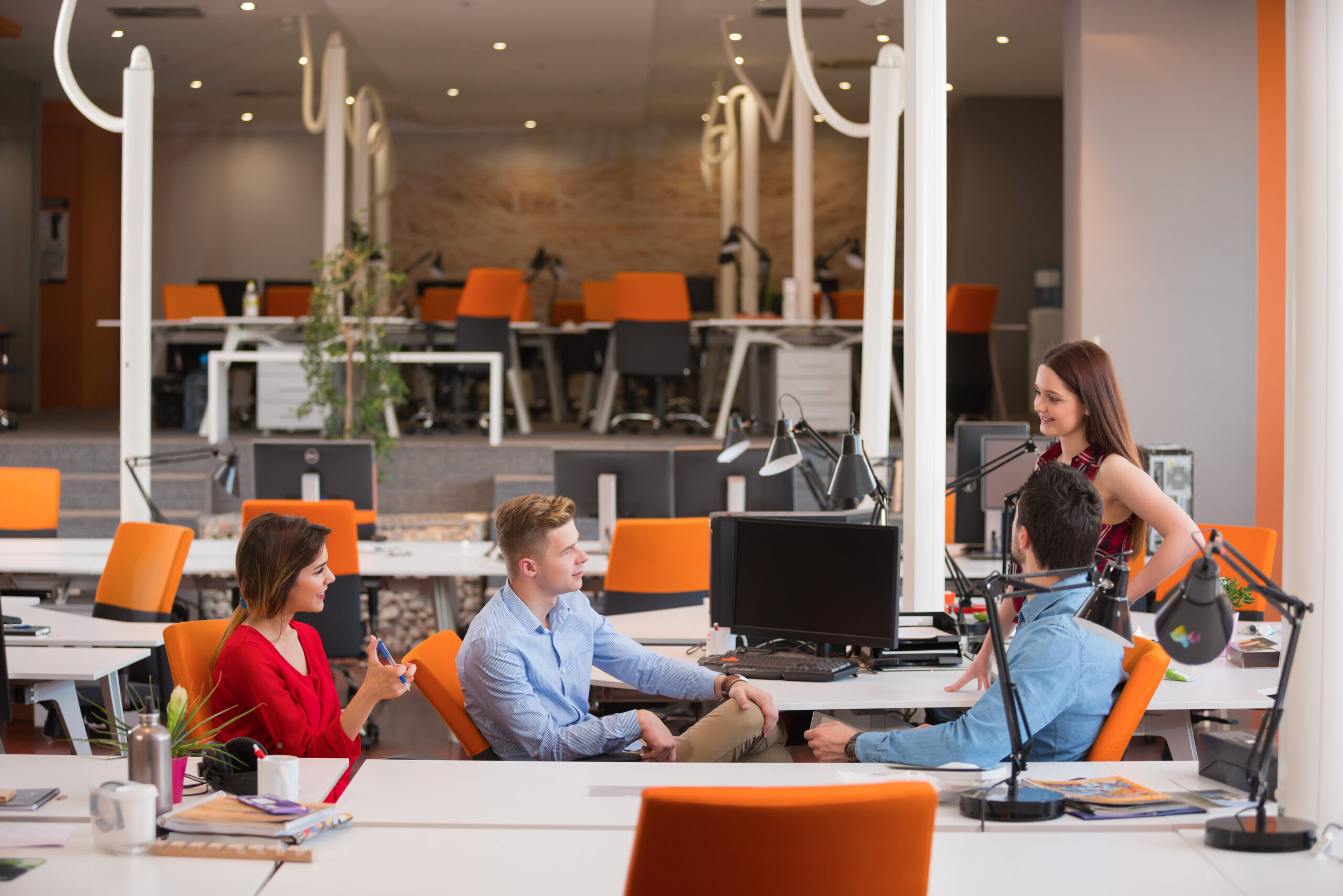Welcome to a world where workspaces aren’t just about desks and chairs; they’re about productivity, creativity, and employee well-being. One vital aspect that significantly influences these factors is the office layout. How you arrange desks, meeting areas, and communal spaces can profoundly impact employee efficiency. Let’s delve into the art and science of maximizing productivity through strategic office layouts.
Understanding the Importance of Office Layouts
The office layout is more than just an arrangement of furniture and partitions. It’s about creating an environment that fosters productivity, collaboration, and overall job satisfaction. An intelligently designed office layout can enhance the flow of communication, promote teamwork, and even affect the health and happiness of employees.
Factors Affecting Office Layouts
Hierarchy and Communication Flow-
The hierarchical organization of a company significantly affects how office spaces are designed. The flow of communication between various levels of staff plays a crucial role in determining the arrangement and structure of workstations and offices within the workspace.
Flexibility and Collaboration
In contemporary work environments, collaboration and flexibility are key focal points. Office layouts must embody adaptability to cater to evolving needs, fostering seamless interaction and collaboration among team members. The design should facilitate dynamic adjustments that align with the ever-changing demands of a modern, agile workspace.
Ergonomics and Comfort
Employees dedicate a substantial part of their day to work, underscoring the importance of ergonomic design and comfort in shaping office layouts. Prioritizing a comfortable workspace is paramount, as it directly correlates to heightened productivity and enhanced job satisfaction among employees. A thoughtfully designed and comfortable environment can significantly contribute to an employee’s overall efficiency and well-being during working hours.
Types of Office Layouts
Open Plan Layout-
An open-plan layout fosters collaboration and transparency by eliminating physical barriers between employees. Nevertheless, it’s crucial to strike a balance between an open environment that encourages interaction and the necessity for private spaces. Finding this equilibrium ensures that employees can collaborate effectively while also having the option for focused work and privacy when required.
Cubicle Layout-
Cubicles offer a middle ground between an open-plan layout and individual offices. They provide a level of privacy while still facilitating seamless communication and collaboration among employees. This setup offers a sense of personal space without completely isolating individuals, promoting teamwork and productivity within a more structured work environment.
Hybrid Layout-
This layout combines the best features of both open-plan and cubicle setups, resulting in a flexible working environment that accommodates diverse work styles and preferences. It allows for open communication and collaboration while also offering individuals the option for some privacy and focused work when needed. This versatility ensures that employees can adapt their work environment to suit their tasks and enhances overall productivity and job satisfaction.
Home Office Setup-
The rise of remote work has brought attention to home office setups. Designing a home office that maximizes productivity involves careful consideration of ergonomics and personal preferences.
Pros and Cons of Each Layout
- Open plan layouts promote communication but might lead to noise distractions.
- Cubicle layouts provide a balance between privacy and collaboration but may hinder open communication.
- Hybrid layouts offer versatility but require thoughtful planning to ensure effectiveness.
- Home office setups offer comfort but may lack the collaborative atmosphere of a traditional office.
Designing an Employee-Friendly Office Layout-
Creating a layout that accommodates the specific needs and preferences of employees is key. An employee-friendly layout promotes a positive work environment and boosts productivity.
Maximizing Efficiency through Office Layouts
Tailoring Layouts to Job Roles
Different roles require different work environments. Tailoring the office layout to suit specific job roles can enhance efficiency.
Incorporating Breakout Spaces
Integrating breakout spaces within the office encourages brainstorming, informal discussions, and relaxation, contributing to improved creativity and productivity.
Prioritizing Lighting and Greenery
Natural light and greenery within the workspace can significantly impact employee well-being and productivity. A well-lit and green environment creates a positive ambiance.
Measuring Productivity and Adjusting Layouts
Regular assessments of employee productivity and feedback can help in adjusting the office layout to address any issues or improve efficiency.
Case Studies: Successful Office Layout Transformations
Examining real-life examples of companies that have revamped their office layouts and witnessed significant improvements in productivity can provide valuable insights.
Future Trends in Office Layouts
As technology evolves and work cultures change, office layouts will continue to adapt. Embracing these trends will be crucial in creating workspaces that maximize productivity and employee satisfaction.
Conclusion
In conclusion, office layouts have a profound impact on employee efficiency and overall productivity. By considering factors like communication flow, flexibility, and employee comfort, organizations can design workspaces that foster collaboration and enhance employee well-being. As we move into the future, it’s vital for businesses to stay attuned to evolving trends and continually optimize their office layouts to create the best possible work environment.
FAQs
How often should an office layout be updated for maximum productivity?
Office layouts should be evaluated periodically, typically every 1-2 years, to ensure they align with changing business needs and employee preferences.
What are some cost-effective ways to enhance the office layout?
Simple changes like rearranging furniture, adding plants, or creating designated collaboration zones can significantly improve the office layout without a hefty budget.
How can a small office space be optimized for productivity?
Small office spaces can be optimized by utilizing multifunctional furniture, maximizing natural light, and promoting a clutter-free, organized environment.
Are there industry-specific office layout recommendations?
Yes, different industries might benefit from tailored office layouts. For instance, creative industries may prioritize open, collaborative spaces, while finance sectors might opt for a balance between privacy and collaboration.
What role does employee feedback play in shaping office layouts?
Employee feedback is invaluable in understanding their needs and preferences. Involving employees in the design process ensures that the office layout caters to their requirements, ultimately enhancing productivity.

